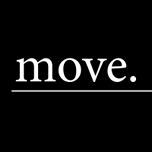Dance Physiotherapy is a type of Physiotherapy that involves assessment, treatment, and prevention of dance-related injuries.
We have experienced physios who grew up in various fields of dance to help you better understand the unique demands involved in this type of movement. These Physiotherapists regularly work with dancers for pre-pointe assessments, injury prevention and injury management. They pursue extra dance-specific Physiotherapy training, as well as staying up to date with current dance-based research, trends and treatment techniques.
What we Do
We provide a range of different Dance Physiotherapy services, including:
Dance Injury Treatment and Rehabilitation
For all types of dance related injuries or issues, most commonly concerning the foot, ankle, lower limb, hip and back. You can find out more about some of these common injuries or sporting conditions here.
Injury prevention
Our Physiotherapists can conduct an assessment of your technique and biomechanics that may contribute to injury. This can involve things such as foot and ankle control, turnout, posture and alignment, core control, strength, and flexibility.
Technique and Performance Enhancement and Education
After an assessment and analysis of technique, mobility and strength, we can provide education and strategies to improve on these areas and help you achieve your dance goals.
Pre Pointe Assessments
Pre pointe assessments can be requested or recommended by teachers to determine if you are ready to begin dancing en Pointe.
A Pre Pointe assessment involves looking at foot and ankle control, lower limb strength, turnout and core strength. We can develop a home exercise program to help improve these areas as required. Not only can this assessment and home exercise programme prepare you for Pointe work, it often has the added bonus of improving general dance technique overall!
Education
Our Physiotherapists strongly believe in education to prevent injury and improve technique, and are able to provide 1:1 education sessions or on-site workshops to encourage this. These sessions can cover:
- Foot and ankle control
- Preparing for Pointe work
- Turnout and hip strength
- Posture and alignment
- Core control
- Secondary and Tertiary Dance assessments
What to Expect
To ensure we can properly understand and diagnose your issues, we generally start treatment with an thorough initial assessment. This begins with a discussion of your dance goals, relevant injuries and areas of technique you want to work on.
From there, our physios will take you through a physical assessment relevant to your injury or technical areas you want to improve on, including things like posture, alignment, foot and ankle control, lower limb strength, flexibility and core control.
Dance Injury Treatment
If you’re coming to see us for treatment on a particular injury, we will work together to decide upon a plan for treatment that recognises your goals.
This is likely include regular hands-on treatment such as soft tissue release and joint mobilisations to relieve pain, regain mobility and restore strength.
You will also be given a home exercise program to complement treatment, as well as strategies to use so you can still get the most out of dance class while rehabilitating.
Your Physio will also liaise with dance teachers, doctors, or parents as necessary to make sure everyone is on the same page while you recover.
Injury prevention, Pre-Pointe Assessments and Technique Enhancement
For those needing education on injury prevention, pre pointe assessments or technique enhancements, you can generally expect to require fewer consultations. These are likely to be further spaced out (for example, one review per month), with accompanying exercises or stretches to do at home to target technical areas that need to be addressed.
These consultations may also include individualised Pilates or exercise programmes to further strengthen, mobilise and improve control for dance when not in class.
How to Book
To book with Bec or Katina for Dance Physiotherapy, you can:
- Call us on (08) 8373 5655
- Use our Online Booking Gateway (available 24/7) to choose your appointment time
- Drop in to see us in person
- Email us on info@moveforbetterhealth.com.au




